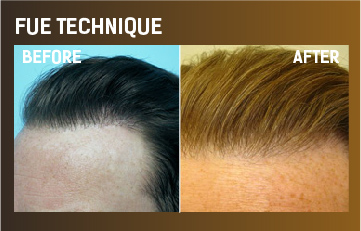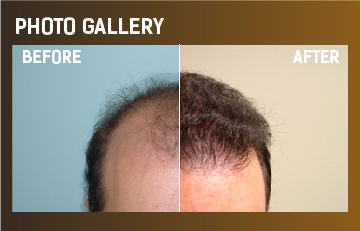Hair transplant surgery is the permanent hair solution for hair loss and selecting the right and experienced hair transplant surgeon is the most critical decision you make. The quality of work is the key for having a natural and successful outcome in hair transplant surgery.
It is very helpful to learn some of the hair transplant surgery history to understand the surgical technique evolution. In 1939, Dr. Okuda in Japan was the first surgeon to publish an article about hair transplant surgery using the 4 mm punch hair grafting technique for the treatment of alopecia (hair loss) of the scalp, eyebrow, moustache and pubic areas. Unfortunately, the outbreak of World War II prevented a worldwide spread of his technique. In 1959, Dr. Orentreich in New York reintroduced the technique using a 4 mm punch to remove donor tissue (grafts) from the back of the head then he made a 4 mm round site in the recipient area to plant the grafts. The punch technique was performed worldwide and was state of the art for hair restoration for many decades until the beginning of the 80’s when the micro-follicular unit technique (small hair grafts) was developed. The old punch technique had pros and cons as any another surgical procedure but it proved that the technique worked and the transplanted hair grew, obviously the pluggyness and scarring were some of the downsides of the technique. Nowadays, with the evolution of medicine and the surgical techniques, the outcome of hair transplant results has improved and the results are very natural.
Spain Hair Transplantation is dedicated to providing cutting edge surgical and medical treatments for both men and women who suffer any type of hair loss.
We believe in natural, undetectable and Permanent Hair Restoration using the latest technology with Follicular Unit Transplantation (FUT) with two donor harvesting techniques: Donor Strip (DS) and follicular unit extraction (FUE) or their combination, we offer the best and most natural looking results.
At Spain Hair Transplantation the hair transplant surgery case is performed on an outpatient basis under oral sedation and local anesthesia. The surgery case involves several phases, which are all critical for surgical success.
• Consultation and Hairline Design: This is the first and critical phase of hair transplant surgery. Patient’s medical, personal and family history will be re-evaluated, any changes with medications, supplements, diseases, etc., should be discussed. The surgery plan will be reviewed again, the patient and the Spain Hair Transplantation surgeon will agree about surgery expectations including the hairline design. The possible surgical side effects and complications will be analyzed and discussed too. The patient will take the necessary dose of the oral premedication. The donor area for harvesting is localized and may be shaved.
• Donor Harvesting- there is two techniques for donor harvesting: the donor strip and the FUE (follicular unit extraction), each technique has pros and cons, side effects and complications. The classic donor harvesting technique includes the removal of a donor strip from the back and/or sides of the head, it is an open technique, which is an area programmed not susceptible for hairs to fall out. The length and width of the donor strip will vary depending on surgery size, donor density, donor availability and hair caliber to achieve the surgery goals for that particular surgery session. After removing the donor strip the area is pulled together and meticulously closed it will be covered with the surrounding hair. The strip is placed in a storage solution and ready for the next phase of surgery.
FUE technique- it is close technique and the extraction of individual follicular units (FUE) with tiny punches (.6-1.0 mm) can be done with a manual or electrical device, it is another excellent surgical technique for donor harvesting for specific patients. In some patients the combination of both harvesting techniques can be performed, too. The donor area may be partially or totally shaved and it depends of each case.
• Graft Dissection: In this phase, the assistants with the use of a Microscope will dissect the donor tissue of the donor strip technique in individual follicular units only or in multi-follicular units according to the surgery plan. The hair technicians dissect the tissue with great skill to minimize graft transsection then the hair grafts are placed in a container with cold preservation solution. The grafts obtained with the FUE technique are also evaluated and revised under the Microscope for quality and % of transection purposes.
• Recipient Site Creation: The SHT surgeon can use different types of instruments such as needles and/or blades for the creation of the recipient sites according to the individual plan for the patient. The angle, direction and tilt of each small incision (.8-1.3 mm) is critical in the different areas of the scalp to achieve artistic density and natural results. The key for follicular unit transplantation is the creation of a natural pattern using naturally occurring 1, 2, 3 to 4 hair grafts. The personalized surgery session varies from 1,000 to 3,000 or more hair grafts. Single hairs are placed in the hairline, two-hair grafts immediately behind the single grafts and 3 to 4 hair grafts and double or multigrafts will be placed in the central and side areas for increasing density. The number of sessions varies for each patient; most of the patients will require two surgeries minimum to achieve the desired results. In many cases can be used the hair implanter is used to make the site and place the graft.
• Graft Placing: all the grafts will be carefully handled and placed in the recipient sites following the angle and direction created by the Spain Hair Transplantation surgeon. This step requires experience and well-trained surgical technicians.
• Final Evaluation: after surgery is completed the assistant will review the post-operative instructions with the patient again including the medications, any patient’s questions will be answered by the surgeon. Local anesthetic will be reapplied in the donor and recipient areas as necessary. The Spain Hair Transplantation surgeon will make the final evaluation and supervision of the donor and recipient areas. An ointment is applied in the suture line that will be covered with the surrounding hair then a tiny bandage is put in place. If the donor harvesting with FUE technique was performed an ointment will be applied in the donor area.
• Post-operative and recovery phase- this surgery phase is very important. For those patients coming back to the office the next day after surgery a complimentary hair wash of the donor and the transplanted hair will be done. Also our staff will teach you how to take care of your scalp on a daily basis. Any discomfort after surgery is handled with oral medications. Most of the new transplanted hair grafts will form a tiny scab that will fall-off in 7 to 10 after surgery. The patient will come back to the office for suture removal 8 to 11 days after surgery (if the donor strip technique was performed) it is no necessary if the FUE technique was performed. For those patients who live out of the city, state or country and have some problems returning to the office dissolve sutures may be used. The scalp is very vascular and will start with the wound repair process immediately after placing the grafts. Also the transplanted hair grafts once placed will start the wound healing process and “survive and take steps”. The hair shaft may also shed but the hair follicles remain and will produce new hairs in the following weeks and months (2 to 4). The new hair goes through the same hair cycle (growing, resting and falling phases) as your existing hair. Generally speaking the final results are usually complete in 10 to 12 or more months post-operatively. The transplanted hair will grow indefinitely and will require the same maintenance as your existing hair. We would like to see you every 4 to 6 months after surgery to evaluate your progress and to answer any questions that you may have.













